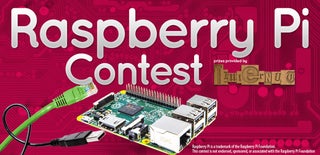Introduction: PRE-TENDO
This is my version of the PiStation. I did not enjoy all of the soldering nor did I think that the PS2 USB adapter worked very well in the above mentioned Instructable. Figured there has to be an easier way. Please advise this is my first instructables, also note I am only covering the hardware as for the PI software you can find how to do that via Google.
Materials:
1x Raspberry PI any will do but I do suggest the Pi2 model B for the Quad core if you wish to add N64 and PS1
1x PS1 not slim might be better to find a non working one as long as the power still works
2x PS2 controller to USB these are the only ones I found that worked Adapter
1x Package of wires Wires
1x Soldering Iron
1x Solder Sucker
1x Package of 5v Regulator
solder
hot glue gun/glue (not necessary but kind of is)
Electrical tape and or heat shrink tubing
Also note this is my 3rd version and on each version only the PlayStation 2 rumble controllers work
IF ANY QUESTIONS OR COMMENTS PLEASE LET ME KNOW
THANKS!!!!
Step 1: Strip It Down
You want to start by flipping the PlayStation over and unscrewing the 6 screws that hold the case together and remove the top exposing the insides of the PlayStation.
You will be removing everything but the power so remove every screw/wire you can find until you are left with only the power supply and the controller board.
Step 2: Desolder
This step is a bit tricky but not hard. You want to unscrew the controller board off the PlayStation then pry of the flimsy metal from the controller board. Next flip the board over and desolder all solder points, some you have to lift the metal ends up to fully desolder it. Once all the solder is removed you can pull the board off exposing some pointy metal connectors. Please note if any connectors come out when you pull the board out you have ruined it. No just kidding just push them back into the slot.
Step 3: Pry Open the USB Adapter
Title says it all get in there with something small and pop off that top exposing the wires and connectors. Once the top is off pull out the metal connectors and be careful as to not pull off the wire. Most of them came out easily but others I needed something to help grip and pull.
Now that your wires are out you can clean them up a bit, I made sure they were all connected and then put some shrink tubing on them again not needed.
Step 4: Making the Connection
Here is the real tricky part, taking the wires from the adapter and getting them onto the control board.
I am color blind so please don't yell at me if the colors are wrong. Looking down at the board starting from left to right
Green
Skip
Blue
Yellow
Red
Black
White
Orange
Brown
(see Picture)
I would not glue anything down until you are 100% sure that the connections are good
Step 5: Wriring the Power
The output of the PlayStation power supply is 7V roughly the Pi uses 5V so using a Regulator we can drop the 7v to 5v and use the PlayStation power supply.
You will need the regulator and 6 wires also some electrical tape or heat shrink tubing.
First thing is take your regulator and slightly bend both ends outward leaving the middle straight. Your ends are your + and the middle is the shared -
Next take your wires and remove the male end only leaving the female ends. Strip the male end and combine the 6 into 3 wires each with 2 female ends. You can twist the wires together and solder them twist them together and tape them twist them together and shrink tube them or all 3 like I did except for the negative that one leave the wires just twisted and exposed.
Next plug one end of the positive into the left most pin on the PlayStation power supply(red cable in picture). Then take the other end of that positive wire and push it into the far left end of the regulator.
Now plug one end of the Negative cable into the pin next to the positive on the PlayStation board(Black cable in picture). Next solder the twisted wire to the middle pin of the regulator. It helps to clip something to the back of the pin to dissipate the heat to the regulator chip
Take the other cable that is not plugged into anything and plug that into the far right pin of the regulator.
At this point I tested the voltage coming from the power supply and it was registering at 5V perfect for the PI
I found that the only good place for the PI to fit was in the upper right corner there is one screw hole that lines up with the PI just enough that it doesn't move much
Lastly take the Negative female end and the positive female end and
plug that into the PI. It needs to go on the bottom set of pins 2nd to the end towards the right is positive then to the left of that is negative looking at the layout numbers 4 is positive and 6 is negative(see pictures)
Once everything is connected you can tape it up or shrink tube it to keep it safe
Step 6: Test Trim and Done
Once everything is put together and you verified the voltage output(if you want)plug the USB adapters to the PI and fire it up. If everything is working I would glue the connectors down on the controller board and the power supply so the do not pop off. I also hot glued the fat part of the connector to the base of the PlayStation. Screw the controller board back onto the base of the PlayStation then flip over the cover of the PI.
You need to cut off some plastic from the top so you can close the case(see pictures).
Once that is done and the cover fits flip the PlayStation over and screw in the 3 screws closest to the controller and the 1 in the upper right corner by the power supply(see photo).
That's it you are done, I added a USB port to the back for a keyboard or mouse and an Ethernet cable in case I needed to add ROMS.

Runner Up in the
Raspberry Pi Contest

Participated in the
Remix 2.0 Contest









